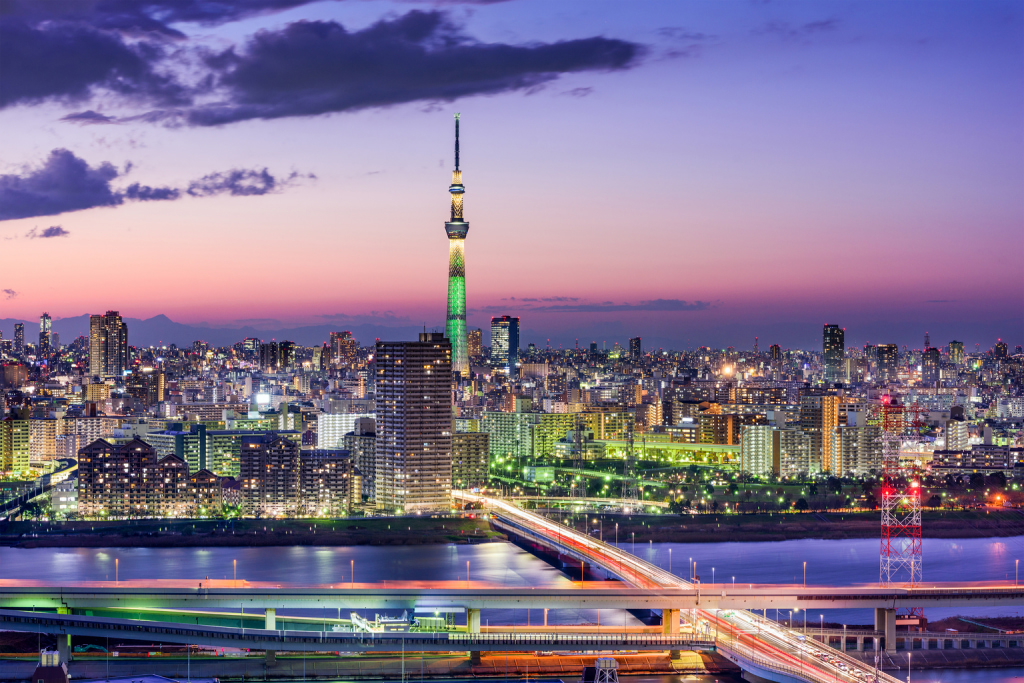In terms of magnetism, or a city’s ability to attract enterprises and creative individuals from around the world, Tokyo once again ranks third behind London and New York City.
According to the annual Global Power City Index 2018 (GPCI) released October 18 by The Mori Memorial Foundation, London continues to dominate the poll in the wake of developments implemented following the 2012 Olympics, while New York’s strong economy, due in part to a lowered corporate tax rate, cements its spot at number two.
Tokyo overtook Paris in last year’s ranking and the two cities maintained their place this year without showing much improvement. While Tokyo increased its score by decreasing work hours and, somewhat surprisingly, offering a variety of workplace options, the city scored relatively low in commitment to climate action and lack of incentives for startups.
“[The GPCI} identifies the strengths and weaknesses of each city,” said Toyo University professor Heizo Takenaka, chairman of the Mori Memorial Foundation’s Institute for Urban Strategies. “It will help us know how [Tokyo] can change and become a more magnetic and stronger city.”
STRATEGIZING FUTURE GROWTH
The GPCI is used as a reference model for governmental urban policy development and corporate strategies. The findings were referenced when Japan’s Cabinet drafted this year’s Future Investment Strategy, and when the Tokyo Metropolitan Government devised its action plan for 2020 entitled, New Tokyo, New Tomorrow.
Hiroo Ichikawa, professor emeritus at Meiji University and executive director of The Mori Memorial Foundation said the GPCI measures the global competitiveness of each city in terms of their comprehensive power to attract people, capital and enterprise from around the world.
The index measure six factors, putting the emphasis on strength of economy, cultural interaction and livability. The index also takes in to account research and development facilitation, environmental initiatives and accessibility.
Tokyo scored in the top 10 in all six categories except for environment, which historically has been a strength.
Tokyo scored in the top 10 in all six categories except for environment, which historically has been a strength, said Ichikawa. This year the GPCI committee changed the way it measures commitment to climate action, which dropped Tokyo’s score from 12th to 29th.
Ishikawa said European and North American cities are taking steps towards international cooperation regarding environmental challenges, while Tokyo is failing to set specific climate action targets and deadlines, and is not incorporating international frameworks or standards.
While total working hours in London, New York and Seoul increased, Tokyo’s total working hours decreased slightly, improving its rank from 34th to 22nd. Tokyo’s working hours are still much higher than European cities such as Paris, Amsterdam and Berlin, which all ranked in the GPCI’s top 10.
In terms of cultural interaction, Tokyo grades well in attractiveness of dining options, but loses points for the number of foreign residents. As foreign tourists continue to increase by leaps and bounds, Tokyo’s number of foreign residents has stagnated over the last 30 years, while the US foreign population increased by 30 percent during the same timeframe.
Tokyo also falls behind its peers when comparing the advancement of women in society. The number of women in the workforce has increased, however the number of women in management and executive positions drastically lags.
TOKYO’S STRENGTH OF ECONOMY
Employment and wage numbers are strong and Tokyo’s research and development patents are abundant, yet the city ranks relatively poor in regards to GDP growth rate and human resources.
The startup environment is slow to develop. Ranked 18th, Tokyo is behind the other Asian cities of Beijing, Shanghai and Seoul. Singapore ranks fourth in the world in terms of startup environment. To improve, Tokyo Governor Yuriko Koike pledged to provide support for 1,000 venture enterprises per year.
In addition, Tokyo’s corporate tax rate of 29.7 percent is still higher than counterparts in Hong Kong (16.5 percent) and Singapore (17 percent).
Tokyo is the top Asian city in the world, but its position is not as firm as London or New York.
“Tokyo is the top Asian city in the world, but its position is not as firm as London or New York,” said Ichikawa. “[The GPCI] shows us how to overcome the weaknesses. We have a clear idea for what Tokyo should work toward.”
The UK’s withdrawal from the EU, set for March 2019, could have an effect on London’s ranking. Ishikawa notes that companies including Panasonic, HSBC and Barclays have already decided to relocate their headquarters from London as a direct result of Brexit.
While New York and the rest of America shows that it has recovered from the global financial crisis, Ishikawa said the influence of the trade friction could emerge, and the “overheated” economy is a concern.
TOKYO’S ‘MAGNETIC’ ROAD MAP
Ishikawa said following 2020 Tokyo has opportunity to implement a universal design for the subway system, the same as London, and to look at other areas of improvement, such as supplying a bullet train to Haneda Airport and increasing the availability of cashless payment.
“The gap widened between New York and Tokyo, which has two years to prepare for the Olympics,” says Ishikawa. “We can expect growth before the Olympics, but afterwards will the growth be the same as London, or will the effect of the Olympics disappear?”
GPCI executive committee member Richard Bender, professor and dean emeritus at University of California, Berkeley, said he was surprised to see smaller European cities ranking high on the GPCI, particularly Amsterdam, which ranked sixth this year, behind Singapore and ahead of Seoul.
Bender said Amsterdam, similar to Tokyo, Kyoto and Osaka, has “deep roots” that increase the authenticity, livability and cultural attraction. Meanwhile, Amsterdam is also a leader in technology and environmental awareness.
Will the growth be the same as London, or will the effect of the Olympics disappear?
While the scores of Beijing and Shanghai fell this year (13th to 23rd and 15th to 26th, respectively) due to fluctuations in economy, environmental standards and traffic congestion (a new GPCI benchmark), Bender says early on the GPCI research predicted the rise of Chinese cities as economic powerhouses.
He says cities in Africa, Latin America and the Asian subcontinent are where the next generation will come from, and it will be interesting to see how these regions overcome the challenges they face as they grow and transform.
“I would like to thank the Mori Memorial Foundation for continuing to support GPCI as a leading source of insight on contemporary urban development,” said Bender. “GPCI is a part of Minoru Mori’s legacy – his tribute to the ideal of urban quality informed everything he did. For him, power meant urbanity and humanism. That GPCI reflects this is the real source of its strength.”
Visit the Mori Memorial Foundation website for complete results.









